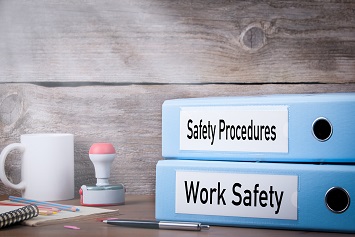As state stay-at-home orders begin to lift and workplaces reopen, are you ready for employee concerns about their safety and health in the ongoing COVID-19 pandemic? How will you respond if an employee files a complaint with the federal Occupational Safety and Health Administration (OSHA) or a state workplace safety and health agency? Employers must be careful of retaliation or the appearance of retaliation.
Coronavirus disease 2019 (COVID-19) is a respiratory illness caused a novel coronavirus, SARS-CoV-2. The World Health Organization declared a pandemic March 11, and March 19, California became the first state to issue at stay-at-home order.
Other states followed, and the businesses considered essential and those ordered to close varied by state and sometimes by county. Georgia became the first state to ease restrictions on April 24.
Almost as soon as the first cases of community transmission were reported, OSHA and state agencies began receiving safety and health complaints related to the COVID-19 outbreak. Through May 13, OSHA has received a total 1,148 complaints related to COVID-19 hazards.
Many complaints involve violations of the general duty clause of the Occupational Safety and Health Act of 1970, requiring U.S. employers to provide workplaces free of recognized serious safety and health hazards. There is no federal standard for airborne disease transmission.
California does have an aerosol transmissible disease (ATD) standard that applies in healthcare facilities and for corrections, law enforcement, and fire and emergency medical services. The Division of Occupational Safety and Health (Cal/OSHA) continues to handle complaints about ATD compliance.
Employees have the right to speak up about hazards, potential violations of OSHA standards, and their safety and health concerns without fear of retaliation. Employees also may file a safety or health complaint with OSHA or a state agency, can request an inspection, and have the right to speak to an inspector.
Employees who feel they have encountered retaliation for exercising their rights under the OSH Act may file a whistleblower complaint but must file one within 30 days of the alleged retaliation.
Adverse actions that may qualify as retaliation include:
- Demoting, firing, laying off an employee;
- Failing to hire, rehire, or blacklisting an employee – notifying other potential employers that an applicant should not be hired or refusing to consider applicants for employment who have reported concerns to previous employers;
- Intimidating, making threats, or reprimanding an employee, as well as, more subtle actions, such falsely accusing an employee of poor performance, or isolating, mocking, or ostracizing an employee;
- Reassignment to a less desirable position or actions affecting prospects for promotion, such as excluding an employee from training meetings; and
- Reducing pay or hours or denying benefits, overtime, or promotions.
Employers must be careful that any workplace safety incentive program does not discourage employees from reporting injuries and illnesses or concerns about safety and health or from filing complaints with OSHA or the appropriate state agency. Even bonuses or prizes may be construed as violating an employee’s rights. For example, questionable practices might involve entering all employees who have not been sick or injured in the previous year into a drawing for a prize or awarding a bonus if no one on a team has reported an injury or illness over a certain period of time.
OSHA instead encourages employers to implement incentive programs that reward workers for reporting near-misses or safety and health hazards; and encourages involvement in improving the safety and health management system.
Antiretaliation Programs
OSHA further encourages employers to implement antiretaliation programs in their workplaces. The key elements of an effective antiretaliation program are:
- Management leadership, commitment, and accountability;
- Systems for listening to and resolving employees’ safety and compliance concerns;
- Systems for receiving and responding to reports of retaliation;
- Anti-retaliation training for employees and managers; and
- Program oversight and ongoing improvement.
Management commitment could involve designating a manager responsible and accountable for handling reports of hazards, compliance concerns, and retaliation. Commitment also may necessitate methods for assessing employees’ willingness to report hazards or their safety and health concerns and measuring the actual record of preventing retaliation.
Systems for listening to and resolving employees’ safety and compliance concerns involve establishing procedures that enable employees to report concerns (these may include confidential or anonymous channels), provide for fair and transparent evaluation of concerns raised, offer a timely response, and ensure fair and effective resolution of employees’ concerns.
Employers may need to designate an independent investigator to review reports of concerns promptly, thoroughly, and with transparency. Managers and supervisors should be coached to respond in a constructive manner when receiving employees’ reports of their concerns.
Employers must guarantee that employee rights are protected even if the person is incorrect or unpleasant in raising a concern.
Reports of retaliation are especially sensitive. Everyone in management should:
- Take all reports of retaliation seriously;
- Maintain employee confidentiality to protect the employee from further retaliation or isolation by coworkers but not use confidentiality as a shield to impede a government agency’s or the employee’s ability to successfully resolve the retaliation claim;
- Be transparent to the employee alleging retaliation about how investigations are conducted, including the roles and independence of the investigators;
- Investigate claims using an objective, independent complaint review process, evaluating the circumstances surrounding the employment decision objectively rather than on defending against the claim, and listening to all sides before making a judgment;
- Ensure that investigations of alleged retaliation are not tainted by preconceptions about what happened;
- Utilize conflict of interest protections and involve senior managers and others who recognize the organizational impact, benefits, risks, and policy ramifications of both the reported concern and the need to prevent retaliation against the reporting employee;
- Ensure that the program does not restrict or discourage employees from reporting retaliation allegations to the government or other appropriate regulatory and oversight agencies;
- Keep the reporting employee and management representatives informed of developments throughout the investigation and ensure proper, respectful closure of the issue;
- Periodically follow up with the reporting employee after the reported problem has been investigated and resolved to ensure continued protection from retaliation; and
- Use third-party, independent investigators if the employer can support it and the circumstances warrant it, especially when the allegations involve particularly polarizing or high-stakes issues.
Employers should make antiretaliation investigations completely independent from the corporation’s legal counsel—the corporate counsel is obligated to protect the employer’s interests. If the corporation’s counsel is involved in conducting the investigation, the whistleblower should be informed that the investigator represents the employer’s interests and that any attorney-client privilege will only extend to the employer.
Early dispute resolution techniques may be appropriate when significant disputes arise about an employee’s disclosures or when considering implementing adverse actions like termination or demotion.
Employees should be informed that they may file a retaliation complaint with OSHA and that any internal investigation by the employer or attempts at early dispute resolution by the employer will not automatically delay the deadline for filing a retaliation complaint with OSHA or another government agency—employees must file a whistleblower complaint within 30 days of the alleged retaliation.
An antiretaliation program also should include training for employees at all level, but especially mangers and supervisors. Training should cover relevant laws and regulations, as well as, employees’ rights and obligations to report any potential hazards to OSHA. It also should cover elements of the company antiretaliation program, including everyone’s roles and responsibilities, how to report concerns internally and externally, options for confidential or anonymous reporting, and how to elevate a concern when supervisors or others do not respond. Training also should cover what constitutes retaliation.
Managers and supervisors should receive training in problem-solving and conflict-resolution skills. They must know how to respond to a report of a workplace concern without engaging in retaliation, appearing to engage in retaliation, or questioning the motives for the report. They also need to be able to separate annoying or inappropriate behavior from the concern itself.
Managers and supervisors also need to understand the signs or retaliation and the potential legal consequences for their employer.
Finally, an antiretaliation program needs oversight, a system of audits and monitoring to identify the program’s strengths and weaknesses. Audits and monitoring may reveal whether program improvements are needed. Audits need to determine whether employees are comfortable reporting their concerns without fear of retaliation and whether managers and supervisors are following the program’s policies.
OSHA Whistleblower Investigations
If an employee files a whistleblower complaint, OSHA investigators will conduct on-site interviews and collect documentary evidence in an investigation of a whistleblower complaint. An employer’s counsel or representative may be present for interviews with managerial staff; but interviews with non-management personnel are conducted in private.
An investigator will seek to conduct an in-person interview with a complainant as soon as possible about allegations of retaliation and will seek to obtain a signed interview statement. OSHA investigators also may request extensive documentation, including copies of any termination notices, reprimands, warnings, or personnel actions; company employee and policy handbooks; job position descriptions; employee performance appraisals; arbitration and collective bargaining agreements; medical records, if applicable; grievances; earnings and benefits statements; and unemployment benefits, claims, and determinations.
Employees may have concerns about the risk of COVID-19 infection. In public-facing businesses like banks and retail stores, customers may not always observe social distancing protocols or wear cloth face coverings. Customers’ behavior may trigger employee concerns.
In healthcare facilities, employees may have concerns about the availability of PPE, including gloves, goggles or face shields, gowns, and respirators and surgical masks. Increased demand and supply chain disruptions have led to an ongoing shortage of N95 filtering facepiece respirators. Surgical masks and cloth face coverings protect others from aerosolized particles generated by the wearer, but N95 respirators protect the wearer from infectious particles emitted by others. OSHA, along with the Centers for Disease Control and Prevention (CDC) and National Institute for Occupational Safety and Health (NIOSH), has issued guidelines for optimizing supplies of N95 and other respirators.
Employees also may have concerns about hazards caused or exacerbated by COVID-19 precautions. For example, the CDC and OSHA recommendations for meat and poultry processing plants include removing personal cooling fans to reduce the potential spread of any airborne or aerosolized viruses. Summer is coming; and employers will need to take other steps to abate heat hazards.



